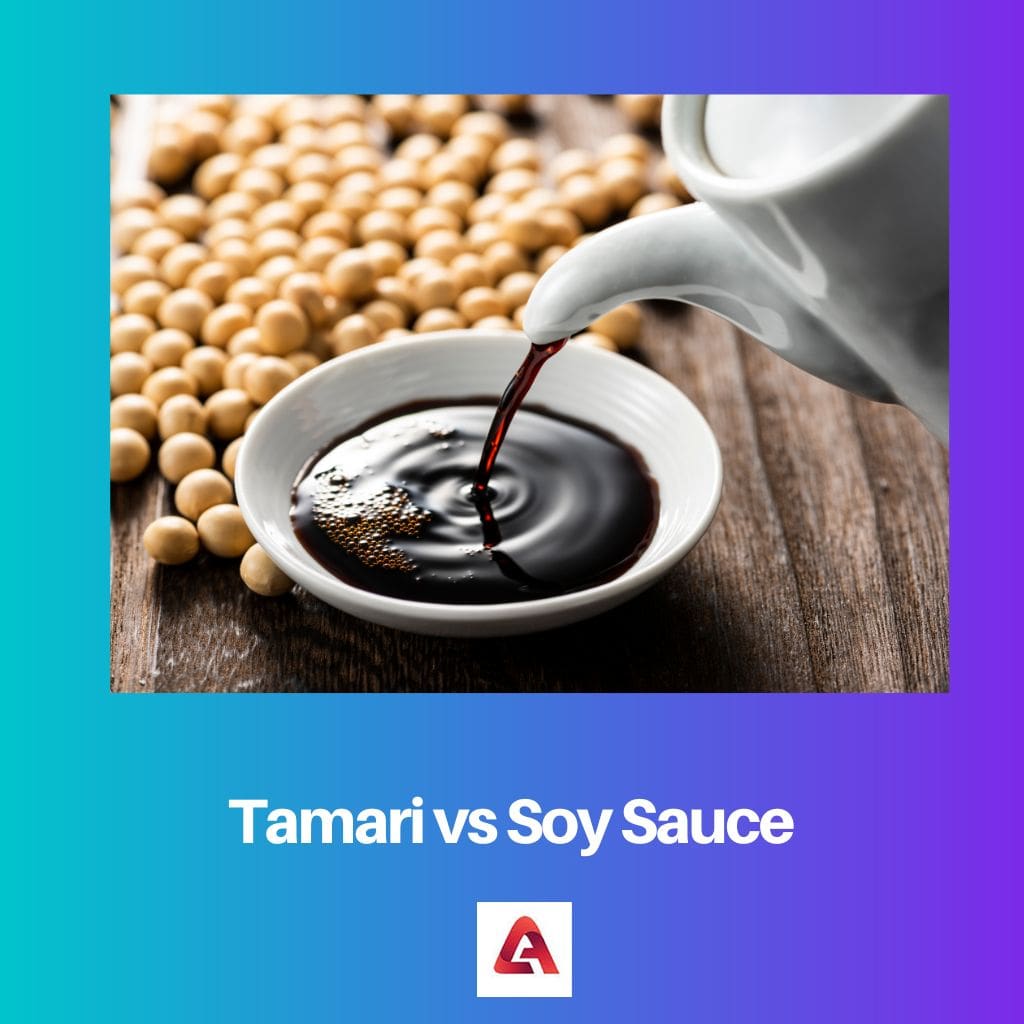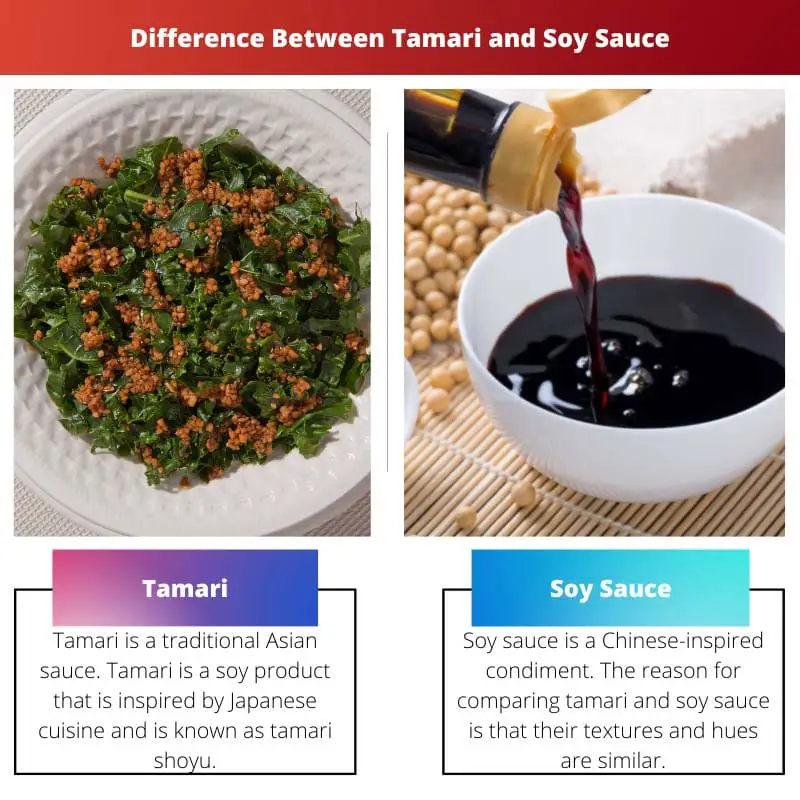These sauces are so similar to each other that it’s difficult to tell them apart. It has been assumed that they are interchangeable; however, this is not the case.
They may appear to be the same color, but when examined closely, they have distinct flavors. The ingredients are also distinct. Let’s look at the history and aesthetics of tamari and soy sauce. Also, look for distinguishing features to set them apart.
Key Takeaways
- Tamari is a gluten-free Japanese soy sauce that is darker, thicker, and less salty than traditional soy sauce.
- Soy sauce contains wheat as a primary ingredient, whereas tamari is made mainly from soybeans, making it suitable for those with gluten intolerance or sensitivity.
- Tamari has a richer, more balanced flavor profile than soy sauce, making it ideal for dipping, while soy sauce is more commonly used for cooking and seasoning.
Tamari vs Soy Sauce
The difference between tamari and soy sauce is that tamari is made up of different ingredients than soy sauce. Even the sauces are influenced by other civilizations, giving them a distinct authenticity. Tamari is a Japanese variation whereas soy sauce is a Chinese variation. Both, however, are byproducts of the fermentation of soybeans.

Tamari is a traditional Asian sauce. Tamari is a soy product that is inspired by Japanese cuisine and is known as tamari shoyu. The sauce’s gluten-free components and subtle saltiness make it particularly intriguing.
It produces a fine texture by blending the constituent materials properly. Further, we will look into the distinct features that differentiate tamari from soy sauce.
Soy sauce, on the other hand, is a Chinese-inspired condiment. The reason for comparing tamari and soy sauce is that their textures and hues are similar.
They do, however, exhibit a distinct texture when observed closely. Soy sauce, in contrast to tamari, is saltier. It also contains gluten, thus gluten-free people should use tamari over soy sauce.
Comparison Table
| Parameters of comparison | Tamari | Soy Sauce |
|---|---|---|
| Originated | Japanese cuisine | Chinese cuisine |
| Does it contain gluten? | No | yes |
| Is wheat used to prepare it? | No | Yes |
| Saltiness | Salty | Saltier |
| Texture | Thicker texture and dense colored | Thinner texture and less dark. |
What is Tamari?
Are you planning a sushi night with your close friends and relatives on Saturday? And you’re stumped as to which sauce would complement the flavor of the sushi you made.
When it comes to determining the differences between tamari and soy sauce, there aren’t many typical distinctions to be found. Tamari is a Japanese-inspired meal made with fermented soybeans and koji, a type of fungus.
The ingredients are combined to produce an umami flavor. Umami is a savory flavor that is pleasant in Japanese. Tamari is one of the five most widely used sauces in Japanese cooking. It’s also recognized for its darker hue and richer texture.
In comparison to soy sauce, the texture is thicker. Aside from that, it’s well-balanced and contains less salt than soy sauce. If you’re following a gluten-free diet, tamari can be the finest solution.
However, there are occasions when traces of heat are employed in the sauce preparation, but this is not required. So, before you go out and buy one for yourself, look at the ingredients.
Tamari is also a gluten-free choice because it is authentically devoid of wheat. Its luscious texture stems from the concentrated soybeans that were used to make it. Another thing to keep in mind about tamari is that it is vegan.
What is Soy Sauce?
Aside from the fact that it is Chinese cuisine, there are several noteworthy variances.
Soaked soybeans and wheat are the primary ingredients in soy sauce production. The wheat grains are toasted and combined with the cooked soybeans in a blender.
Soy sauce has a sweet yet acidic flavor because of the bending of the two components. Soy sauce has higher salt content, as well as a lighter texture and color.
Soy sauce is also not gluten-free. The number of soybeans needed to make soy sauce is half of what is needed to make soy sauce.
When comparing texture, tamari has a denser and thicker texture than soy sauce, and when comparing the balance of ingredients, tamari is far more balanced than soy sauce.
Both sauces, on the other hand, are regarded to be interchangeable. However, there is a significant difference because the former is gluten-free, whereas soy sauce contains gluten.
Tamari has a higher protein level than soy sauce, albeit the difference isn’t significant. When compared to soy sauce, tamari has a lower salt level.
For over a thousand years, soy sauce has been a staple of Chinese cuisine. Chiang is the product that sparked the development of soy sauce over 3000 years ago.

Main Differences Between Tamari and Soy Sauce
- Tamari is a Japanese condiment, whereas soy sauce is Chinese in origin.
- Tamari, on the other hand, is gluten-free, whereas soy sauce is not.
- Tamari is a heavier, thicker kind of soy sauce.
- Wheat isn’t utilized in tamari, yet it is one of the most important elements in soy sauce.
- In contrast to tamari, soy sauce has a lighter tint.




